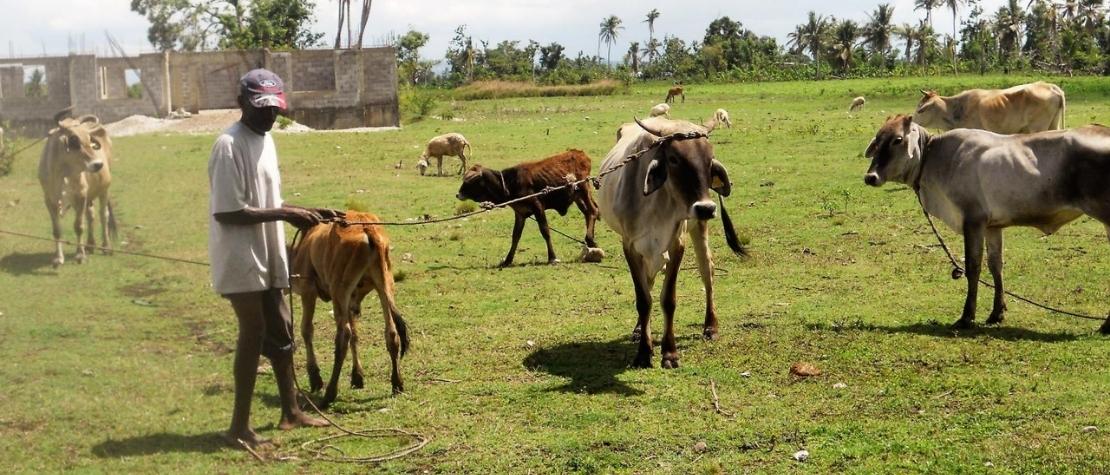Haiti

In each country, the goals of the FO4ACP are: Improved access to services to empower women, rural youth and vulnerable communities, Increased entrepreneurship, access to markets and financing through equitable value chains and business development services within POs, respecting sustainable food and agricultural principles, Facilitate a common sub-regional policy and program development process with governments, stakeholders and partners, including farmer and rural youth organizations, foster information exchange, training and capacity development.
Haiti occupies a third of the island Hispaniola which it shares with the Dominican Republic and which is located between the Atlantic Ocean and the Caribbean Sea. It is the third largest country in the Caribbean, after Cuba and the Dominican Republic, with a total area of 27,750 km2 made up of "Grande Terre" and satellite islands (Ile de la Gonâve, de la Tortue, des Cayemites and Ile-a-Vache).
The cultivated area is 1.28 million ha in 2012, or 46 percent of the country, including one million arable land, the rest being permanent crops. There are also about 0.49 million ha of permanent meadows. Forests cover less than 100,000 ha in 2011, which is 3.5 percent of the territory (FAOSTAT, 2015), a decrease of 13.6 percent since the year 2000 (UNDP, 2015) and this while they extended over 60 percent of the territory in 1960 (MDE, 2001). The 2008-2009 agricultural census counted just over one million farms with an average area of 0.93 ha. Haitian agriculture is therefore very fragmented, mostly family-run and 32.7 percent of the cultivated area is intended for self-sufficiency with cereal and food crops such as corn, rice, sorghum, beans, sweet potato, cassava plantain (MARNDR, 2013). Among the production intended for sale, some products are exported such as coffee, mango, cocoa, sisal, tobacco, coconuts, cotton. However, their production, like that of all agricultural products in general, has declined in recent decades, resulting in particular from a drop in productivity and yields linked to soil degradation (UNEP, 2010). The national herd amounts to more than 4.6 million heads, of which 45 percent are goats, 24 percent cattle, 23 percent pigs, and 8 percent sheep (MARNDR, 2013a).
